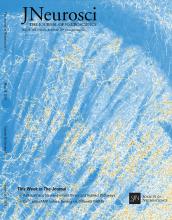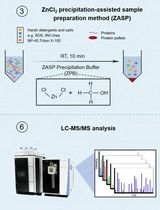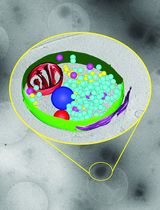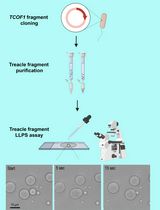- EN - English
- CN - 中文
MPM-2 Mediated Immunoprecipitation of Proteins Undergoing Proline-directed Phosphorylation
脯氨酸依赖性磷酸化蛋白质的MPM-2介导的免疫沉淀
发布: 2016年12月05日第6卷第23期 DOI: 10.21769/BioProtoc.2046 浏览次数: 8755
评审: Oneil G. BhalalaEmma PuighermanalPia Giovannelli
Abstract
Immunoprecipitation (IP) represents a widely utilized biochemical method to isolate a specific protein from a complex mixture taking advantage of an antibody that specifically recognizes that particular target molecule. This procedure is extremely versatile and can be applied to concentrate a specific protein, to identify interacting partners in complex with it or to detect post-translational modifications. The mitotic protein monoclonal 2 (MPM-2) is an antibody originally raised against extracts of synchronized mitotic HeLa cells to identify proteins selectively present in mitotic, and not in interphase-cells (Davis et al., 1983). MPM-2 recognizes phosphorylated serine or threonine residues followed by proline (pS/T-P), consensus epitopes generated by the concerted action of proline-directed protein kinases and phosphatases (Lu et al., 2002). These reversible phosphorylation events have emerged to control various cellular processes by promoting conformational changes on the target that are not simply due to the phosphorylation event per se. These motifs, once phosphorylated, are able to recruit Pin1 (Peptidyl-prolyl Isomerase NIMA interacting protein 1) (Lu et al., 1996; Lu and Zhou, 2007), a chaperone which drives the cis/trans isomerization reaction on the peptide bond, switching the substrate between functionally diverse conformations (Lu, 2004; Wulf et al., 2005). This protocol describes a general MPM-2 based immunoprecipitation strategy using the scaffolding molecule postsynaptic density protein-95 (PSD-95) (Chen et al., 2005), a neuronal Pin1 target (Antonelli et al., 2016), as an example to illustrate the detailed procedure.
Keywords: MPM-2 antibody (MPM-2抗体)Background
Identification of antigens recognized by MPM-2 antibody represents a useful starting point for the discovery of target molecules undergoing post-phosphorylation prolyl-isomerization regulatory mechanism. The prolyl isomerase Pin1, in fact, shares with MPM-2 antibody the same recognition motif as well as the phospho-dependency of the binding. The main advantage of using the MPM-2 antibody in immunoprecipitation experiments is the achievement of a selective enrichment of the phosphorylated targets over the unphosphorylated counterparts, which are frequently present in much greater quantities in the cell. Precipitated antigens by virtue of such post-translational modification can be then easily identified by standard western blotting using highly specific primary antibodies.
Materials and Reagents
- 10 cm2 Petri dishes (Corning, catalog number: 353003 )
- Dissection plate (Sigma-Aldrich, catalog number: P7741 )
- 1.5 ml reaction tube (SARSTEDT, catalog number: 72.706.700 )
- Surgical scalpel blade number 11 (Sigma-Aldrich, catalog number: S2771 )
- 26 gauge needle (BD, PrecisionGlideTM, catalog number: 305110 )
- Amersham Protran Premium 0.2 NC (GE Healthcare, catalog number: 10600004 )
- HEK293 cells
- C57BL/6 mouse strain (or any other mouse model, both genders)
- pAcGFP1-C1 vector (Takara Bio, Clontech, catalog number: 632470 )
- FLAG-PSD-95 plasmid DNA (Craven et al., 1999)
- Dulbecco’s modified Eagle’s medium (DMEM) high glucose, GlutaMAXTM supplement (Thermo Fisher Scientific, GibcoTM, catalog number: 10566016 )
- 10% fetal bovine serum (FBS)
- Polyethylenimine, Linear (PEI) (Polysciences, catalog number: 23966-2 )
- Penicillin-streptomycin (10,000 U/ml) (Thermo Fisher Scientific, GibcoTM, catalog number: 15140148 )
- cOmpleteTM EDTA-free protease inhibitor cocktail tablets (Roche Diagnostics, catalog number: 11873580001 )
- Phosphatase inhibitor cocktail 1 (Sigma-Aldrich, catalog number: P2850 )
- IgG from mouse serum (Sigma-Aldrich, catalog number: I8765 )
- Anti-FLAG (clone M2) (Sigma-Aldrich, catalog number: F9291 )
- Phospho-Serine/Threonine-Proline MPM2 antibody (EMD Millipore, catalog number: 05-368 )
- Protein G Sepharose 4 Fast Flow (GE Healthcare, catalog number: 17-0618-01 )
- PageRulerTM prestained protein ladder (Thermo Fisher Scientific, Thermo ScientificTM, catalog number: 26616 )
- Bovine serum albumin (BSA) (Sigma-Aldrich, catalog number: A2153 )
- Goat anti-mouse HRP conjugated IgG (EMD Millipore, catalog number: 12-349 )
- ECL detection reagents (GE Healthcare, catalog number: RPN2209 )
- Sodium chloride (NaCl) (Sigma-Aldrich, catalog number: S9888 )
- Potassium chloride (KCl) (Sigma-Aldrich, catalog number: P9541 )
- Disodium hydrogen phosphate (Na2HPO4) (Sigma-Aldrich, catalog number: 7558-79-4 )
- Potassium dihydrogen phosphate (KH2PO4) (Sigma-Aldrich, catalog number: 7778-77-0 )
- Tween 20 (Sigma-Aldrich, catalog number: P9416 )
- Trizma® base (Sigma-Aldrich, catalog number: T1503 )
- NP-40 (Sigma-Aldrich, catalog number: I3021 )
- Triton X-100 (Sigma-Aldrich, catalog number: T8787 )
- Glycerol (Sigma-Aldrich, catalog number: G5516 )
- Sodium orthovanadate (Na3VO4) (Sigma-Aldrich, catalog number: S6508 )
- Sodium fluoride (NaF) (Sigma-Aldrich, catalog number: 201154 )
- TEMED (Sigma-Aldrich, catalog number: T9281 )
- Sodium dodecyl sulfate (SDS) (Sigma-Aldrich, catalog number: L3771 )
- Bromophenol blue (Sigma-Aldrich, catalog number: B0126 )
- Methanol (Sigma-Aldrich, catalog number: 322415 )
- Glycine (Sigma-Aldrich, catalog number: G8898 )
- Acrylamide/bis-acrylamide (29:1) (Sigma-Aldrich, catalog number: A2792 )
- Ammonium persulfate (Sigma-Aldrich, catalog number: A3678 )
- Phosphate buffered saline (1x PBS) (see Recipes)
- MPM-2 lysis buffer (see Recipes)
- Phosphatase inhibitors (see Recipes)
- IP wash buffer (see Recipes)
- 2x Laemmli sample buffer (see Recipes)
- Western blot running buffer (see Recipes)
- Western blot transfer buffer (see Recipes)
- Tris-buffered saline-Tween 20 (TBS-T) (see Recipes)
- BSA blocking solution (see Recipes)
Equipment
- Nikon Diaphon 300 phase contrast inverted tissue culture microscope
- Cell scraper (Sigma-Aldrich, catalog number: C5981 )
- Refrigerated centrifuge (Eppendorf, model: 5424R )
- Incubator (Panasonic Biomedical Sales Europe, model: MCO-18AC-PE )
- DNA sonicator (EpiShear, model: Cooled Sonication Platform )
- Rotator mixer (Scilogex, model: MX-RD-Pro LCD Digital Tube Rotator Mixer )
- Tissue homogenizer (Thomas Scientific, catalog number: 3409Y72 )
- Cold room, 4 °C
- Polyacrylamide gel electrophoresis system (Bio-Rad Laboratories, catalog number: 1658000EDU )
- Western blot transfer apparatus (Bio-Rad Laboratories, model : Trans-Blot® Cell )
Software
- Alliance 4.7 software (UVITECH)
- UVI band Imager software
Procedure
文章信息
版权信息
© 2016 The Authors; exclusive licensee Bio-protocol LLC.
如何引用
Readers should cite both the Bio-protocol article and the original research article where this protocol was used:
- Antonelli, R. and Zacchi, P. (2016). MPM-2 Mediated Immunoprecipitation of Proteins Undergoing Proline-directed Phosphorylation. Bio-protocol 6(23): e2046. DOI: 10.21769/BioProtoc.2046.
- Garré, J. M., Yang, G., Bukauskas, F. F. and Bennett, M. V. (2016). FGF-1 triggers Pannexin-1 hemichannel opening in spinal astrocytes of rodents and promotes inflammatory responses in acute spinal cord slices. J Neurosci 36(17): 4785-4801.
分类
神经科学 > 细胞机理 > 突触生理学
生物化学 > 蛋白质 > 分离和纯化
您对这篇实验方法有问题吗?
在此处发布您的问题,我们将邀请本文作者来回答。同时,我们会将您的问题发布到Bio-protocol Exchange,以便寻求社区成员的帮助。
Share
Bluesky
X
Copy link















